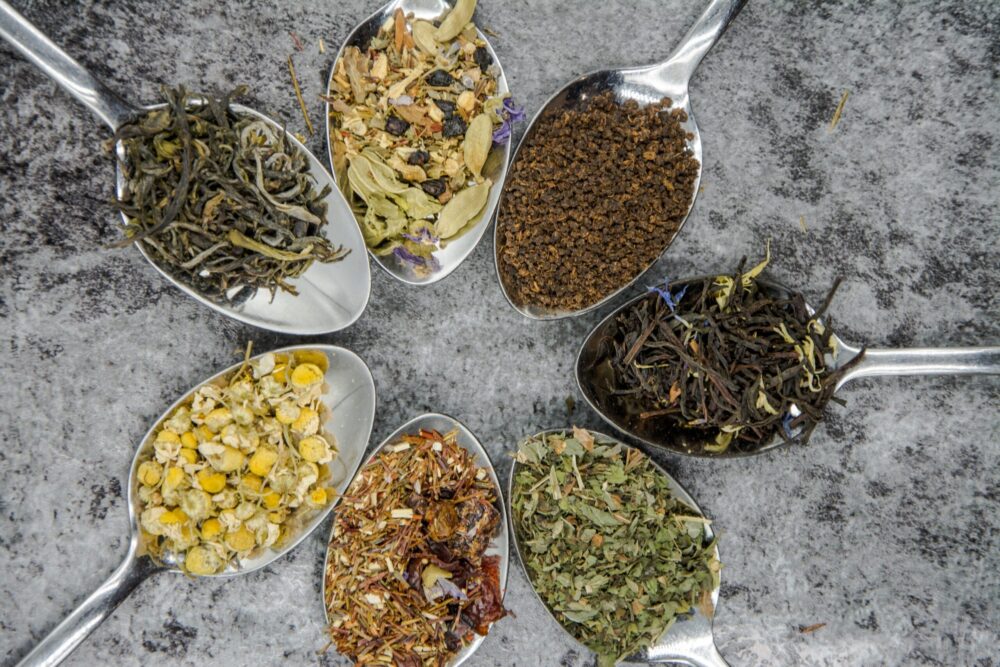Table of Contents
Introduction to Tea Types
Welcome to the ultimate tea-tasting extravaganza, where we embark on a journey from verdant green to bold black, sipping our way through the marvelous medley of tea types! It’s time to don your fanciest teacup and join us in unraveling the enchanting world of tea.
In this delightful exploration, we’ll traverse the delicate nuances of tea types, from the elegant subtlety of white tea to the unapologetic boldness of black. We’ll introduce you to tea types that are so unique they might just redefine your understanding of what tea can be.
But wait, there’s a twist! We’re not stopping at the classics; we’re diving headfirst into the rebel territory of herbal teas, uncovering the wisdom of aged Pu-erh, and savoring the caffeine-free delight of Rooibos. Tea types, true and faux, are all on the guest list for this flavorful fiesta.
So, dear tea aficionado, whether you’re a seasoned sipper or just dipping your toe into the teapot, prepare to be charmed by the rich tapestry of flavors, aromas, and stories that tea types have to offer. From fragrant gardens to hidden mountainous nooks, this is a journey that promises to tantalize your taste buds and leave you steeped in admiration for the world’s favorite beverage.
Buckle up, tea types of all kinds – it’s time to sip, savor, and spill the tea on the extraordinary diversity of these seven exquisite elixirs.
Green Tea: A Verdant Delight
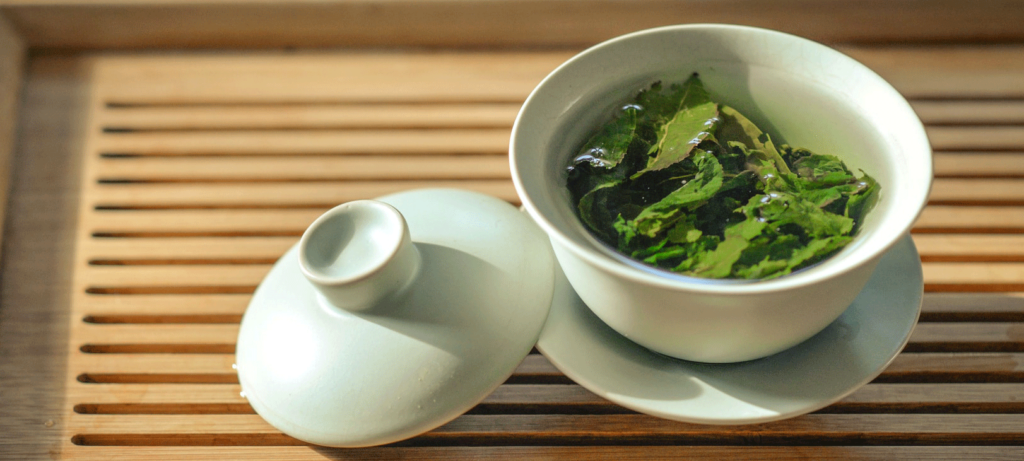
- Origin: Green tea, one of the most beloved tea types, traces its roots back to ancient China, dating as far as 2737 BC. Legend has it that Emperor Shen Nong discovered the soothing properties of green tea when tea leaves blew into his boiling water.
- History: Throughout centuries, green tea has been an integral part of Asian cultures, celebrated for its refreshing flavor and potential health benefits. It traveled the world through trade routes, igniting a global fascination with tea types.
- Types: Green tea, like a versatile artist, comes in various forms. Some notable ones include Japanese matcha, Chinese Dragonwell, and Sencha. Each boasts unique flavors and preparation methods, adding layers of diversity to the world of tea types.
Benefits of Green Tea: Sip and Thrive
- Antioxidant Powerhouse: Green tea is a superstar when it comes to antioxidants, fighting off those pesky free radicals that threaten our well-being.1
- Metabolic Boost: Many tea types, especially green tea, are believed to boost metabolism, potentially aiding in weight management.
- Mindful Moments: The ritual of brewing and sipping green tea can offer a serene escape, promoting mindfulness and relaxation.
Limitations and Considerations: Balancing Act
- Caffeine Content: While lower than black tea, green tea still contains caffeine, so for the ultra-sensitive tea types, nighttime sipping may require caution.
- Bitter Brews: Oversteeping green tea can turn your peaceful cup into a bitter brew, so watch that timer diligently.
- Stain Woes: Green tea’s vibrant hue can be a delight to the eyes but a nuisance to your teeth, so keep your dentist’s number handy.
More to Savor: Food Pairings and Beyond
- Culinary Exploration: Green tea isn’t limited to a cup; it’s a versatile ingredient in cooking and baking, adding a touch of earthiness to dishes.
- Tea Types Fusion: Ever tried green tea-infused ice cream or chocolate? It’s an adventure for your taste buds.
- Beauty Secrets: Green tea has found its way into skincare products, thanks to its potential to soothe and rejuvenate the skin.
In the grand tapestry of tea types, green tea shines as a vibrant thread, offering not just flavors but a world of wellness and culinary exploration. So, raise your cups, tea types, and toast to the verdant delight that is green tea! 🍵🌱
Black Tea: The Bold Classic

- Origin: Black tea has its origins intertwined with the grand tea history of China, where it was first known as “red tea.” It later made its way to the global stage through trade routes and colonial expansion, becoming an enduring favorite among tea types.
- History: Once a closely guarded secret in China, black tea found its way into British teapots, leading to the beloved tradition of “afternoon tea.” Its rich, full-bodied flavor became synonymous with refinement and comfort.
- Types: From the iconic English Breakfast to the smoky Lapsang Souchong, black tea showcases a diverse range. Assam, Darjeeling, and Ceylon are other renowned black tea types, each flaunting distinct characteristics.
Benefits of Black Tea: A Steeped Symphony
- Energy Boost: Black tea’s moderate caffeine content makes it an ideal pick-me-up for those needing a gentle nudge to start the day.
- Heart Health: Regular consumption of black tea has been linked to potential benefits for heart health, thanks to its antioxidants and flavonoids.2
- Mood Elevation: Sipping on a cup of black tea can be a comforting ritual, offering a moment of solace and stress relief.
Limitations and Considerations: Sip Sensibly
- Caffeine Sensitivity: Black tea can be a bit too spirited for the caffeine-sensitive tea types. Opt for decaffeinated versions if you’re aiming for a late-night brew.
- Brewing Balance: Steep black tea for just the right duration; too long, and it can turn astringent.
- Staining Potential: The deep, dark hue of black tea can stain teeth, so a regular dental routine is a must.
More to Savor: Beyond the Teacup
- Tea Types Harmony: Pair your black tea with a scone or biscuit for a quintessential afternoon tea experience.
- Culinary Creativity: Use black tea as a marinade for meats or as a flavor enhancer in sauces and desserts.
- Health Hues: Some use brewed black tea as a natural hair dye, bringing out beautiful, subtle highlights.
In the world of tea types, black tea stands tall as a bold and charismatic classic. It’s more than a beverage; it’s an experience that has shaped cultures and traditions around the globe. So, whether you prefer it with a splash of milk or au naturel, here’s to the timeless charm of black tea! ☕🖤
Oolong Tea: The Enigmatic Hybrid
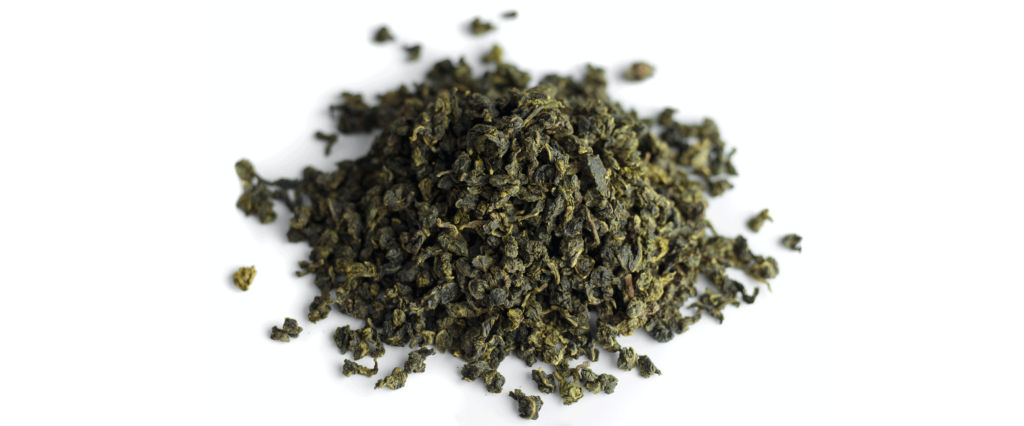
- Origin: Oolong tea, the middle child between green and black tea types, has its roots deeply embedded in Chinese tea culture. It’s a tea that embodies the art of balance, sitting gracefully between the two extremes of tea oxidation.
- History: Oolong’s history is as rich as its flavor. Born in the Fujian province of China, it quickly gained fame as a prized tea type, known for its complex flavors and the meticulous craftsmanship required to produce it.
- Types: Oolong is a diverse family, with varieties such as Tie Guan Yin, Dan Cong, and Wuyi Rock Tea. Each oolong type boasts its own unique flavor profile, from floral and fruity to toasty and earthy.
Benefits of Oolong Tea: A Taste of Harmony
- Digestive Aid: Oolong tea is often celebrated for its potential to aid digestion, making it an ideal choice after a hearty meal.
- Metabolism Booster: Like its green tea sibling, oolong may assist in boosting metabolism, potentially aiding in weight management.
- Meditative Moments: The preparation and sipping of oolong tea can be a meditative experience, offering a moment of tranquility and mindfulness.
Limitations and Considerations: The Balance Beam
- Caffeine Content: Oolong tea falls somewhere in the caffeine middle ground, which can be a boon or a bane, depending on your tea type preference.
- Steeping Sensitivity: Be mindful of steeping times; oolong can quickly become bitter if oversteeped.
- Complex Character: Oolong’s diverse flavor profiles mean there’s a lot to explore, but it can also be overwhelming for newcomers to tea types.
More to Savor: Beyond the Teapot
- Tea Types Fusion: Experiment with oolong in cocktails, pairing it with floral liqueurs or citrus for a unique flavor experience.
- Gourmet Pairings: Oolong’s intricate flavors make it a fantastic companion for fine cheeses and desserts.
- Aromatic Escapes: Oolong’s fragrant leaves can be used in potpourri or sachets to add a touch of elegance to your living space.
Oolong tea, with its captivating taste and balanced nature, is a tea type that embodies the art of tea-making. It’s the tea for the curious and the connoisseurs, offering a journey of flavors that’s as intricate as the leaves themselves. Here’s to the enigmatic allure of oolong tea! 🍵🌼🌿
White Tea: The Gentle Elegance
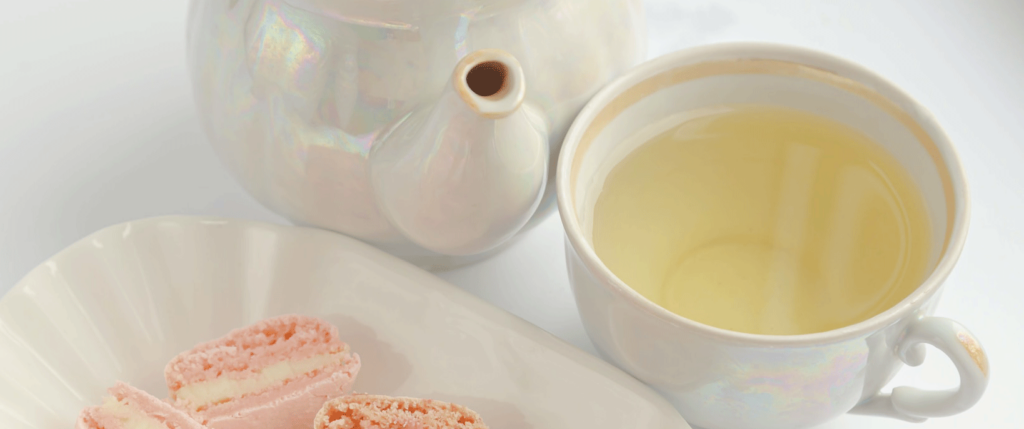
- Origin: White tea is the embodiment of grace and simplicity, with origins in China’s Fujian province. It’s crafted from the youngest tea leaves and unopened buds, resulting in a tea type that’s delicate and pure.
- History: White tea has a history as pure as its flavor. It was once a closely guarded secret of Chinese emperors, who revered it as the “Elixir of Immortality.” Over time, its secrets spread to delight tea types around the world.
- Types: White tea may be gentle, but it has its own range of expressions. Bai Hao Yinzhen, Bai Mu Dan, and Shou Mei are some of the exquisite white tea types, each offering a unique experience for the palate.
Benefits of White Tea: Nature’s Nectar
- Antioxidant Elixir: White tea boasts an abundance of antioxidants, making it a popular choice among health-conscious tea types.3
- Skin Radiance: Some tea types lovers use white tea topically to soothe and rejuvenate the skin, harnessing its natural beauty benefits.
- Calm in a Cup: The mild, slightly sweet flavor of white tea is like a gentle lullaby for the senses, making it a perfect choice for relaxation.
Limitations and Considerations: Handle with Care
- Low Caffeine: White tea is the tea type for those who prefer a gentle pick-me-up. Its caffeine content is notably lower than other tea types.
- Subtle Taste: The mildness of white tea can be a downside for those who prefer bold flavors; it’s a tea type that whispers rather than shouts.
- Fussy Brew: White tea demands attention; steep it too long, and it can lose its delicate charm.
More to Savor: Beyond the Teacup
- Floral Infusions: White tea can be infused with flowers like jasmine or rose for a fragrant and elegant tea experience.
- Tea Types Elegance: Use white tea as a base for cocktails or mocktails for a touch of sophistication.
- Tea-Spiced Desserts: Incorporate white tea into desserts, such as white tea-infused ice cream or delicate cakes.
White tea, with its gentle elegance and delicate charm, is a testament to the simplicity and purity of tea. It’s the tea type that invites you to slow down, savor the moment, and embrace the subtle nuances of flavor. Here’s to the serene beauty of white tea! 🍵🌼🕊️
Rooibos Tea: The South African Star

- Origin: Rooibos tea, often called “red bush tea,” hails from the Cederberg region of South Africa. It’s a tea type cultivated from the leaves of the Aspalathus linearis plant and boasts a unique flavor profile.
- History: Rooibos tea’s story is one of resilience and adaptation. Indigenous people of South Africa discovered its herbal properties long ago, and it eventually found its way into the global tea types spotlight.
- Types: While not as diverse as traditional tea types, rooibos comes in two main varieties: green and red. Green rooibos is unoxidized and has a grassier flavor, while red rooibos is oxidized, producing a richer, earthy taste.
Benefits of Rooibos Tea: Nature’s Nectar from Afar
- Caffeine-Free Bliss: Rooibos is naturally caffeine-free, making it a perfect choice for tea types looking to avoid caffeine’s buzz.
- Rich in Antioxidants: Despite its caffeine-free status, rooibos is rich in antioxidants, offering potential health benefits.4
- Digestive Comfort: Many tea types appreciate rooibos for its soothing qualities, often sipping it to ease digestive discomfort.
Limitations and Considerations: The Red Road Less Traveled
- Subtle Flavor: Rooibos has a distinct flavor that may not appeal to those who prefer the more traditional tea types like black or green.
- Steeping Time: While it’s forgiving when it comes to steeping, leaving it too long can lead to a somewhat astringent taste.
- Less Familiarity: Rooibos may be less familiar to some tea types, but it’s worth the adventure for those seeking a caffeine-free option.
More to Savor: Beyond the Teapot
- Herbal Blends: Rooibos is an excellent base for herbal blends, often paired with spices, fruits, or herbs to create flavorful infusions.
- Tea Types Culinary: Experiment with rooibos in cooking, using it as a marinade or incorporating it into baked goods for a unique twist.
- Skin and Hair Care: Rooibos extract is a common ingredient in skincare products, valued for its potential to soothe and rejuvenate the skin.
Rooibos tea, with its South African charm and soothing qualities, is a tea type that beckons you to explore new horizons. It’s the tea for those seeking a caffeine-free, flavor-rich alternative and a sip of distant lands. Here’s to the warmth and earthiness of rooibos tea among all other tea types! ☕🌱🌍
Pu-erh Tea: The Aged Elegance
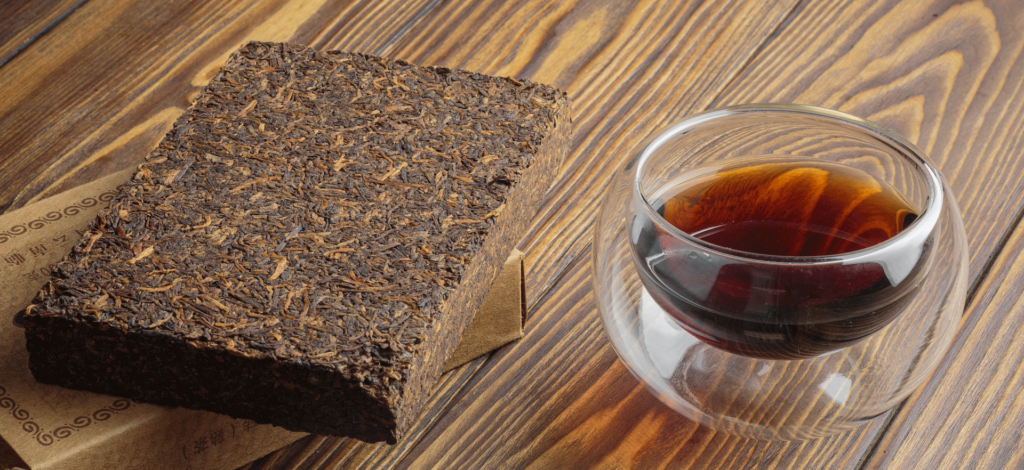
- Origin: Pu-erh tea, a treasure among tea types, finds its roots in China’s Yunnan province. What sets it apart is its aging process, which can span decades, creating a tea type known for its complex and mature flavor.
- History: The history of pu-erh reads like a fine wine’s journey. It was initially developed as a way to transport tea over long distances. Over time, it became revered for its earthy depth and potential health benefits.
- Types: Pu-erh tea comes in two primary categories: sheng (raw) and shou (ripe). Sheng pu-erh is aged naturally over time, while shou pu-erh undergoes an accelerated fermentation process, resulting in a mellower taste.
Benefits of Pu-erh Tea: Aged to Perfection
- Gut Health: Pu-erh’s unique fermentation process has led many tea types enthusiasts to believe it can promote digestive health.
- Antioxidant Rich: Like other tea types, pu-erh is brimming with antioxidants, offering potential wellness benefits.
- Tea Types Serenity: The ritual of brewing and sipping pu-erh is a meditative experience, inviting you to slow down and savor the journey.
Limitations and Considerations: The Tea with Patience
- Caffeine Alert: Pu-erh can be high in caffeine, making it a robust choice for those seeking an energy boost.
- Aquired Taste: Its mature, earthy flavor may not resonate with all tea types palates; it’s a tea that often grows on you.
- Storage Savvy: Proper storage is crucial for pu-erh’s aging process; it requires a patient and vigilant tea types steward.
More to Savor: Beyond the Teapot
- Tea Types Pairing: Pair pu-erh with dark chocolate or aged cheese for a delightful and sophisticated tasting experience.
- Culinary Intrigue: Use pu-erh as a unique ingredient in savory dishes, marinades, or even desserts.
- Collectible Art: For tea enthusiasts, collecting aged pu-erh cakes can be a captivating journey into the world of tea types.
Pu-erh tea, with its aged allure and complex flavors, is like a fine wine among tea types. It’s the tea for those who appreciate the depth that time imparts to their brew and seek the wisdom of an ancient elixir. Here’s to the timeless elegance of pu-erh tea! 🍵🕰️🌿
Herbal Tea: The Natural Symphony

- Origin: Herbal tea, often referred to as tisane, is a delightful departure from traditional tea types. It doesn’t come from the Camellia sinensis plant like other teas but is crafted from a diverse array of herbs, spices, flowers, and fruits from around the world.
- History: The history of herbal tea is as diverse as the ingredients used to create it. Different cultures have long embraced the soothing qualities and unique flavors of herbal infusions.
- Types: The world of herbal tea is a kaleidoscope of flavors and potential benefits. Some popular choices include chamomile for relaxation, peppermint for invigoration, and hibiscus for its vibrant hue and tartness.
Benefits of Herbal Tea: Nature’s Gift to Tea Types
- Caffeine-Free Bliss: Herbal tea is naturally caffeine-free, making it an ideal choice for tea types looking to unwind without the caffeine buzz.
- Wellness Wonders: Many herbal infusions are cherished for their potential health benefits, from aiding digestion to promoting sleep and relaxation.
- Flavorful Delights: Herbal tea is a versatile canvas for flavor experimentation, offering a wide range of tastes to suit every tea types preference.
Limitations and Considerations: Herbs and Harmony
- Varied Effects: The effects of herbal infusions can vary widely, so it’s essential to choose the right blend for your desired outcome.
- Steeping Sensitivity: Steeping times and temperatures can significantly impact the flavor, so be mindful of brewing instructions.
- Allergy Alert: Some individuals may be sensitive to certain herbs, so it’s advisable to test new herbal blends cautiously.
More to Savor: Beyond the Teapot
- Culinary Exploration: Incorporate herbal infusions into cooking and baking, infusing your dishes with unique and delightful flavors.
- Creative Combos: Experiment with herbal blends by mixing different ingredients to create your custom brews.
- Natural Beauty: Some tea types enthusiasts use herbal infusions in DIY skincare recipes, harnessing their natural properties for glowing skin and shiny hair.
Herbal tea, with its limitless diversity and soothing qualities, is a celebration of nature’s bounty. It’s the tea for those seeking unique flavors, wellness benefits, and a sip of the natural world. Here’s to the symphony of herbs and the harmony they bring to our teacups! ☕🌿🌼
Conclusion
In this flavorful journey from green to black, through oolong, white, herbal, Pu-erh, and Rooibos, we’ve ventured into the captivating realm of tea types. Each variety is a testament to the artistry and diversity of the world of tea, offering a palette of flavors, aromas, and experiences to suit every tea enthusiast. From the timeless elegance of white tea to the aged allure of Pu-erh, and the vibrant, caffeine-free charm of herbal and Rooibos, tea continues to captivate our senses and soothe our souls. If you would like to deep dive into a comprehensive guide please visit How to make loose leaf tea.
Whether you seek the bold classics, the nuanced elegance, or the soothing herbal embrace, there’s a tea type waiting to be your perfect cup of comfort. So, let your teapot whistle, your kettle sing, and your taste buds dance, as you savor the timeless delight of tea in all its splendid diversity. Here’s to the world of tea, where every sip tells a story, and every cup is a journey. Cheers to tea types of all kinds, and may your tea adventures continue to steep in flavor and delight! 🍵✨🌿

